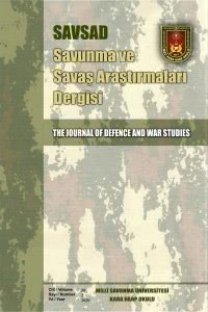DİL ÖĞRETİMİNDE UYGUN TESTLER:ÖĞRETMEN, ÖĞRENCİ VE ARAŞTIRMACILARIN GÖRÜŞLERİ ÜZERİNE BİR ÇALIŞMA
Language tests, measurement and evaluation
THE PROPER TESTS IN LANGUAGE TEACHING: A STUDY ON INSTRUCTORS, STUDENTS’ AND RESEARCHERS’ PERSPECTIVE
___
- Abbott, G.; J. Greenwood, (1985). The Teaching of English as an International Language. Collins: Glasgow and London. Edele, A.; J.Seuring, , C.Kristen, , P. Stanat, (2015), Why bother with testing? The validity of immigrants’ self-assessed language proficiency. Social Science Research, 52, 99-123. Fulcher, G. (2016), Assessing second language speaking, Language Teaching, 48,2,198-216. Genesee, F., J. A. Upshur, (1998). Classroom-based Evaluation in Second Language Education. Cambridge Language Education. Huang, H.T.D. (2016), Exploring strategy use in L2 speaking assessment, System. 63,13-27. Hughes, A., (2003). Testing for Language Teachers. Cambridge University. Karslı, M.D., (2003). Öğretmenlik Mesleğine Giriş (Alternatif Yaklaşım). Ankara: Pegem A Yayınları. Lee, J. F., (2000). Tasks and Communicating in Language Classrooms. Indiana University: The Mc Graw-Hill Companies, USA. Ling, G.(2017), Are TOEFL iBT® writing test scores related to keyboard type? A survey of keyboard-related practices at testing centers, Assessing Writing, 31, 1-12. Nation, I.S.P., J. Macalister, (2009). Language Curriculum Design. Routledge, NY and London. Park, K. (2014), Corpora and Language Assessment: The State of Art, Language Assessment Quarterly, 11,1,27-44. Richards, J.C., J. Platt, H.Platt, (1993). Language and Applied Linguistics. Longman, England. Snow, M. A., D. M. Brington, (1997). The Content–Based Classroom: Perspectives on Integrating Language and Content. Longman
- ISSN: 2718-0301
- Yayın Aralığı: 2
- Başlangıç: 2006
- Yayıncı: MİLLİ SAVUNMA ÜNİVERSİTESİ > KARA HARP OKULU > DEKANLIK
KAVRAMSAL DEĞİŞİM YAKLAŞIMINA YÖNELİK ÇALIŞMA: GAZLAR KONUSU
KARA HARP OKULU LABORATUVAR MERKEZİ BİNASININ YEŞİL BİNA ÖZELLİKLERİ AÇISINDAN İNCELENMESİ
Serkan YILDIZ, Burcu GÜLTEKİN, Emre SAVURAL
GİRİŞİMCİLİK YÖNELİMİNİN İŞE BAĞLANMA ÜZERİNDEKİ ETKİSİNDE ALGILANAN ÖRGÜTSEL DESTEĞİN ROLÜ
Ali Rıza İNCE, Mustafa Kemal TOPCU
ADAMUS BREMENSİS’İN GÖZÜNDEN VİKİNGLERİN TARİHİ COĞRAFYASI
4x4 TİPİNDE MATRİSLERİN DETERMİNANTLARINI HESAPLAMADA ALTERNATİF BİR YÖNTEM
DİL ÖĞRETİMİNDE UYGUN TESTLER:ÖĞRETMEN, ÖĞRENCİ VE ARAŞTIRMACILARIN GÖRÜŞLERİ ÜZERİNE BİR ÇALIŞMA
